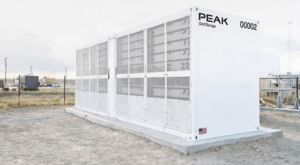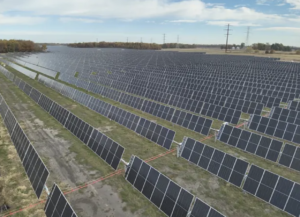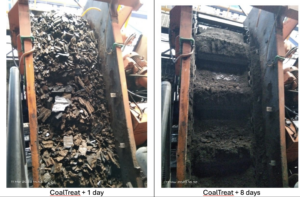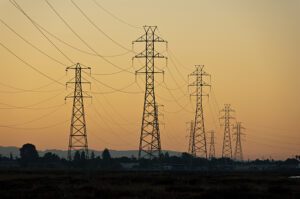Grid operator Empresa Propietaria de la Red (EPR) is modernizing Central America’s 230-kV SIEPAC backbone with advanced communications, fault-location tools, and cybersecurity to meet the unique challenges of a multinational high-voltage grid.
Imagine managing an electrical transmission system across an area the size of Spain—193,051 square miles serving 37 million people—but where international borders create operational obstacles that no traditional utility ever faces. That’s a daily reality for Empresa Propietaria de la Red (EPR), operator of Sistema de Interconexión Eléctrica de los Países de América Central (SIEPAC), Central America’s electrical backbone, which spans 1,800 kilometers (km) from Guatemala to Panama.
SIEPAC was first envisioned in 1987 to link the power grids of six of Central America’s seven countries—Guatemala, Honduras, El Salvador, Nicaragua, Costa Rica, and Panama—with a 230-kV transmission line carrying an initial 300 MW capacity. The project sought to alleviate regional power shortages, reduce operating costs through shared hydroelectric resources, foster a competitive energy market, and attract investment in generation and transmission systems. Today, SIEPAC operates with an interchange capacity of approximately 600 MW per direction, though plans are underway to increase its capacity even further through additional circuits and interconnection enhancements.
EPR, which serves as the regional operations entity for the critical link, is registered in Panama and owned 75% by the six Central American public utilities and transmission companies—ENEE (Honduras), ICE and CNFL (Costa Rica), INDE (Guatemala), ETESA (Panama), ENTE (Nicaragua), and CEL/ETESAL (El Salvador)—with the remaining 25% held by private investors Endesa of Spain and ISA of Colombia. But since it was established in 1999, EPR has confronted challenges that would seem insurmountable to utilities operating within single countries.
Unlike domestic grids, which typically benefit from standardized regulations, streamlined coordination, and uniform operational protocols, EPR’s task involves navigating a patchwork of different national policies, regulatory frameworks, and security protocols across 1,116 miles of the 230-kV transmission lines. That includes managing high-voltage protection, measurement, and control infrastructure across 22 substations distributed throughout the six countries. Managing such a vast and diverse network requires technical expertise in high-voltage transmission as well as sophisticated coordination tools, resilient communication systems, and advanced fault detection and cybersecurity measures.
“In our Central American countries, despite the fact that we have a lot of unity, we still do not have a system of open borders,” explained Carlos Farfan, Operations and Maintenance manager at EPR. “This creates a very different challenge compared to a typical, traditional transmission company that operates in a single country.”
A Strategic Modernization Approach
The practical implications of closed borders are far-reaching. When faults occur near international boundaries, EPR must dispatch personnel from multiple countries to inspect transmission lines on both sides of borders—a time- and resource-intensive process that extends outage durations and multiplies costs. The SIEPAC line crosses rugged terrain (Figure 1) where accessing equipment requires significant coordination even under normal circumstances. Adding complexity, EPR operates within other transmission companies, meaning their equipment is installed in substations that aren’t theirs. This arrangement gives people from other companies access to EPR’s critical infrastructure, creating security vulnerabilities while simultaneously making it more difficult for EPR personnel to access their own devices for maintenance and troubleshooting.
 |
|
1. Empresa Propietaria de la Red (EPR) operates the 1,800-km SIEPAC transmission line, a 230-kV backbone linking six Central American nations across rugged terrain and international borders. Courtesy: SEL |
Rather than accept these limitations, EPR embarked on targeted modernization efforts designed to overcome multinational operational challenges through advanced technology. The entity envisioned systems that would improve visibility across the entire network, making it easier to record faults, identify causes, pinpoint locations, and dispatch repair crews efficiently—all while reinforcing cybersecurity for equipment accessible to multiple organizations.
The modernization strategy centers on three key technology pillars: advanced wide-area communications, precise fault location capabilities, and comprehensive cybersecurity. EPR selected equipment from U.S.-based Schweitzer Engineering Laboratories (SEL), a company specializing in protection, control, and automation systems for high-voltage grids worldwide. SEL’s technology is valued across the industry for its reliability, refined over decades of deployment, and for the company’s responsive technical support. For EPR, the choice was also built on a partnership already proven through earlier use of SEL protection devices and years of close customer service collaboration.
“It all started with their backbone communications network between the six countries, which was modernized with ICON,” said Eduardo Palma, Regional Technical Manager at SEL.
Communications Foundation: The ICON Platform
Because implementing advanced protection and control systems across six countries requires a high-quality communications backbone with exceptional reliability and availability, EPR selected the SEL ICON Integrated Communications Optical Network platform as its foundation technology (Figure 2). The SEL ICON functions as a multiplexer that provides wide-area network communications for multiple critical applications, including line differential protection, SCADA transmission to control centers, and synchrophasor data transport for visualization across the entire region. The system can be managed remotely via secure access, which is essential for multinational operations where physical access remains challenging.
|
2. EPR deployed the SEL ICON Integrated Communications Optical Network as the backbone of its modernization program, enabling advanced traveling-wave fault location and other high-voltage protection applications. Courtesy: SEL |
As part of the design, EPR chose a hybrid topology that combines linear and ring elements. This configuration provides redundancy through independent channels between all substations, ensuring greater availability if any single channel is lost. Where possible, EPR added connections at strategic points to further enhance reliability across the multinational network. The ICON provides the reliable wide-area communications needed for several key technologies that EPR uses, including line-differential protection, synchrophasor collection, and advanced traveling-wave fault locating.
Precision Fault Location: The SEL-411L Solution
Traditional fault location methods create particular challenges for multinational systems where dispatching maintenance crews requires international coordination. EPR implemented the SEL-411L fault-location system to overcome these obstacles through superior accuracy that eliminates guesswork about fault locations.
“On top of the ICON, we mounted our traveling-wave fault-locating protection system, which has given us great accuracy,” said Farfan.
The SEL-411L Advanced Line Differential Protection, Automation, and Control System provides traveling-wave fault locating, which represents a significant advancement over traditional impedance-based fault location methods. By measuring the arrival times of traveling waves that faults produce, the technology can pinpoint fault locations to within 300 meters (1,000 feet), independent of transmission line length.
That precision proved transformational for EPR’s operations. Instead of dispatching crews from multiple countries to search for faults along international borders, operators can direct maintenance personnel to specific locations with confidence. The technology allows EPR to resolve faults quickly with fewer human resources than typical transmission companies require. “This is a multinational transmission system,” Palma explained. “So, when an operator is dispatching maintenance, he doesn’t want to dispatch the Costa Rican crew when the fault actually happened across the border on the Panama side.”
The SEL-411L devices simultaneously function as phasor measurement units, capturing synchrophasors that provide additional information supporting fault-locating efforts. That dual functionality becomes especially valuable when comparing data between multiple fault-locating tools to identify locations with conviction across international boundaries.
Despite not having large maintenance teams distributed across six countries, EPR now maintains an efficient system where modern technology enables effective resource utilization. The precise fault location capability has allowed EPR to improve response times without expanding its maintenance organization.
Cybersecurity Architecture: The SEL-3620 Solution
Operating equipment in substations owned by other companies creates cybersecurity challenges that single-country utilities rarely encounter. EPR addressed these concerns by implementing SEL-3620 Ethernet Security Gateway systems to prevent unauthorized access while enabling efficient remote operations. The cybersecurity implementation includes layered defenses featuring role-based access control for employees, intelligent electronic device (IED) password rotation, and meticulous logging of employee access and any changes made to devices.
“The implementation of the cybersecurity system allows engineers to have reliable and remote access to facilities and protection,” said Jorge Mario Méndez, Regional Substation Coordinator at EPR. “That also allows us to have remote and secure collection of events for an appropriate post-failure analysis to avoid the risk of intrusion by an unwanted person.”
The remote access capabilities reduce travel requirements for routine maintenance and troubleshooting activities, which are particularly important given border crossing procedures and travel restrictions that complicate personnel movement across the six-country system.
Operational Results and Benefits
EPR’s systematic modernization approach has delivered measurable improvements in system visibility and operational efficiency across the multinational network. The traveling-wave fault locating capability enables precise fault identification, reducing response times without requiring expansion of maintenance teams distributed across six countries.
The enhanced communications infrastructure, meanwhile, supports real-time monitoring of system conditions, enabling operators to make informed decisions about power flows and system operations while accounting for varying national regulations and market conditions. Finally, the integrated cybersecurity approach addresses multinational operational challenges while maintaining equipment security standards across diverse regulatory environments.
Most importantly, the modernization enables EPR to deliver on SIEPAC’s fundamental promise: better quality electricity service and lower rates through improved regional market efficiency. By reducing operational costs and improving system reliability, the technology investments directly benefit the 37 million people served by the interconnected system.
—Curated by POWER, adapted from Schweitzer Engineering Laboratories. See the original content at selinc.com/epr-siepa.










